There are classic loudspeakers and there are classic loudspeakers. Janine Elliot takes a listen to the Chartwell LS3/5 Loudspeakers by Graham Audio costing between £1650 and £1800. The creation of a classic?
Mention BBC LS3/5a’s and my eyes light up. As a child I got excited every time I saw these or other speakers that used the infamous Kef B110 and T27 drivers, the numbers based on the size of the bass and treble drivers in millimetres. Whilst I eventually worked at the BBC itself and even bought the iconic late 70’s Meridian M2 powered speakers based on two B110’s and aT27, I still always wanted to buy my own LS3/5a. When Jim Rogers set up company at the top of my road in St. Albans for his JR149 rounded versions of the LS3/5a’s I almost bought a pair though, even as a teenager, could hear it wasn’t as good as “the real thing”, so didn’t. A shame, as its clever bracing and near cylindrical shape gave it apparent enormous advantages over traditional rectangular boxes. To fill the gap I bought the well-respected, cheaper and smaller Videoton Minimax, and it was many years later that I finally got to buy a pair of original Rogers 11ohm and more importantly the 15 Ohm Chartwell’s, often argued as the very best of the various companies producing them under licence from the BBC. It was the extended bass that particularly set this speaker on a (loudspeaker) pedestal. Now, for the first time in 38 years, the name Chartwell has been reborn in this new Graham Audio LS3/5, at £1650 for Cherry and £1800 for Rosewood, modelled on the very the first version of the great speaker before the “a” was added. This is the holy trinity, Graham Audio having already brought out the bigger LS5/9 (reviewed last year) and then the very large LS5/8.![GA_Chartwell-LS3-5_[preview-not-for-use]-PairGrill](https://hifipig.com/wp-content/uploads/2016/07/GA_Chartwell-LS3-5_preview-not-for-use-PairGrill.jpg)
History
Now, to understand this speaker, we really need to go back in time. The story begins where studio managers at the BBC listened to music and speech. From the date I joined the Corporation in 1983 I was treated daily to BC1’s, LS3/5a’s, LS3/6, LS5/2, LS5/5’s, LS5/8’s and many numbers in between. The LS5* full frequency series of speakers were the largest and designed for far-field, large studio and particularly for music. The LS3’s were for OB (outside broadcast) situations such as in mobile van where headphones (in those days horrible Bakelite BT type phones) were impractical, but were also common for speech recording or office editing and recording areas where space was very tight and therefore “near-field” monitors needed. Just to confuse you, the LS5/12a, was the last near-field OB BBC speaker – the size of an LS3/5a. This was intended to be a monitor speaker just like all the other 5’s with surprisingly good bass and treble extension, and whilst it has been successfully reborn by Harbeth, it never quite made it as a competitor to the 3/5a musically, sounding a bit “disjointed” and painful at times. More importantly, and regrettably it was the last ever BBC-funded design before they axed the department and many of the brains. Sad days, and having already closed the BBC Radiophonic Workshop (the reason I really wanted to work at Aunty), that unforgiving mutilation of what had made the Corporation so great, was party to my decision to leave with 5000 other professionals in 2007. Sensibly or sadly, great BBC engineers have left to set up PMC, Trilogy, Leema Acoustics and numerous others, and of course long before that to set up Spendor (SPENcer Hughes and wife DORothy), Harbeth (Dudley HARwood and wife ElizaBETH), etc. For this review, the important names for the LS3/5 were BBC Research Department headed by H D (Dudley) Harwood and Spencer Hughes, and a team of T Sommerville and D E Shorter, those for LS3/5a were Harwood and Hughes again with Maurice Whatton and R W Mills from the Design’s department, and finally the name very much associated with this new Graham Audio speaker up for review here is Derek Hughes, whose dad was of course Spencer Hughes.
The original LS3/5, of which there were only 20 or 21 pairs produced, began their design process at the BBC from 1968 and utilised the iconic Kef B110/T27 combination that had been available since 1966. At this time the BBC were looking at studio designs working at 1/8th scale modelling and included designing speakers that could climb to 100kHz, managing to create a pair of 110mm Bextrene bass cones that could get as high as 15kHz, then adding a large number of 25mm diameter electrostatic transducers in an omnidirectional array looking like a disco mirror ball to fill the rest of the frequencies. To get those high frequencies for the test they used specially built condenser microphones and adapted tape recorders running at 750mm/sec (30ips – which is 8 times 3¾ ips) creating top-end frequency response of, wait for it, 105kHz! Mathematically dividing the target 400-105,000Hz by 8 comes out at the important broadcasting frequencies of 50-13,125Hz. During tests the findings were assembled to not only help in the designing of studios, such as Maida Vale 1, but also to create the very first LS3/5 built to pick up the important frequencies from 400Hz to 15,000Hz, though their final design actually managed better than 100Hz, something unthinkable at that time for such a small box. Early photos show the original LS3/5 design with the tweeter below the woofer; something particularly taken up by Mission many years later. Interestingly I actually prefer my own Chartwells that way round, largely to get the tweeters at the correct height! Whether they were actually intended to be that way round is speculative, with many “in the know” saying that this theory is a white elephant. There are even photos showing a small hole that has been filled in, suggesting quite a different ported design concept turned down in favour of the more “controllable” infinite baffle. The original was 9 ohm, though a Rogers advertisement in the 1970’s suggested it was 8ohm and again showing the tweeter below the woofer. It also had a ‘routed edged’ wood cabinet making it look much thinner than 12mm as specified. This was probably a pre-production flier, so just how accurate it is, is for another discussion.
When even more LS3/5’s were needed by the Corporation the Engineering division at Kingswood Warren in Surrey discovered that the B110 and T27 drivers had since been modified by KEF. The BBC Engineering department was therefore left to redesign the speaker to get back to the original specification, a design noted with its slight hump at around 1.5-2kHz, despite the Bextrene cone coated with a damping compound to minimise colourations. This wasn’t easy; the Mk2 B110 bass unit needed to be decoupled from the baffle as it was now interacting with it, changing the frequency response characteristics. Similarly the T27 tweeter gave a more coloured sound. To control these the familiar rectangular felt pad around the tweeter was added to “focus” the sound and stop secondary waves reflected by the cabinet, since the T27 radiating surface is small and the radiator itself nearly Omni-directional. Also, it was suggested that the infamous front Tygan cover grille should remain on in playback, and in contact with the felt pads around the tweeter. The 12mm birch plywood cabinet walls were braced, Bostik sound deadening panels and foam and deadening pads all added to make the “box” acoustically inert, unlike most speakers before that.
As well as the later batches of B110/T27 drivers being different to the first lot, there were also a lot of discrepancies between each individual tweeter, meaning that the crossover had to be designed in such a way that if a tweeter needed to be replaced, the BBC engineers could do adjustments to ensure it matched another speaker. Therefore the original design used an autotransformer inductor at L3 with different tappings, so the engineer could set it to the appropriate connection to get the sound just right. The later 11 ohm version had no less than 26 elements in the crossover, doing away with the transformer-type inductors. It is estimated that the design of the LS3/5 and then the LS3/5a cost for the BBC around £100,000, which in 2016 would equate to almost £2M, enough to really annoy many licence fee payers. Unfortunately.
To allow conveyer-belt access to their little speaker when needed the BBC allowed the LS3/5a’s to be produced by a number of UK manufacturers. This initially included four major suppliers; firstly Rogers, then Watford’s KJ Leisuresound owned’ Audiomaster, Chartwell, and KEF. Then Goodmans, Spendor and others that included Harbeth. Apparently also JPW and RAM had licences, the latter producing perhaps a hundred before being taken over by Goodmans. Whilst most LS3/5a’s were produced by Rogers and Spendor it is generally considered that the 15ohm Chartwell are the very best, though the infamous June 2001 HiFi News listening test headed by ex HiFi News colleague Ken Kessler and also Paul Whatton (son of Maurice) put Harbeth 11ohm versions slightly ahead, though still not as good as the original 001/002 LS3/5a lent to them for the shootout. When Chartwell went into receivership in 1978 before the 11 ohm versions of the icon were manufactured, their cabinet maker sold approximately 100 pairs of the plywood cabinets to Linn which were used to make the first batch of Kans.
Spencer Hughes, Derek’s father, had designed the Bextrene cone at the BBC, as was used in the LS3/6, otherwise known as the Spendor BC1 (Bextrene Cone 1). When Dudley Harwood left the BBC in 1977 to start Harbeth, he took with him the discovery and patent for the application of polypropylene driver. Modern day LS3/5a’s such as from Harbeth and from Sterling Audio use polypropylene. The original B110, designed (as was the T27) by Malcolm Jones, was made from Bextrene and he left KEF to start Falcon Acoustics (and Nightingale Acoustics) where the company continued manufacture of identically constructed B110’s and T27’s, designed all the crossovers for LS3/5a’s, and even make their own 15ohm LS3/5a’s – which I have to say look exactly like the original LS3/5a specification as published in 1976, though having the 25% thinner wall 9mm birch plywood cabinets.
Derek Hughes took over from his dad at Spendor, producing the S3/5, a great little monitor in its own right. When the company was taken over again he left to work with Alan Shaw who took over at Harbeth in 1987, and then helping Doug Stirling with their LS3/5A V2 (the “V2” to show that, whilst offering the same sound as the KEFs, it has drivers made by SEAS and Scan Speak). Now he is behind the Graham Audio LS3/5, the only version of the very first speaker.
My not so brief history circle is very important in this review, and left me with lots of questions about driver materials, inverting drivers and why the baffle of the new Chartwell hasn’t been made to look like the original apart from positions of the screws. Luckily, the weeks I had to listen gave me lots of excitement and it all started to make sense. Ultimately the sound would be the most important argument here. Like the Stirling model, Graham Audio don’t bother with the glued rear panel, rather using screwed-on front and rear panels with differing processes of keeping it all rigid and damped. Unlike the LS3/5a, this new model is designed (as with the original 3/5) to be used with the grille off, looking as smart as any 21st century mini monitors. This speaker would be wrong with the ‘a’ version’s rectangular felt in place, and matt black painted baffle as with most 70’s and 80’s speakers would look dated.![GA_Chartwell-LS3-5_[preview-not-for-use]-FrontOpen_ONLINE](https://hifipig.com/wp-content/uploads/2016/07/GA_Chartwell-LS3-5_preview-not-for-use-FrontOpen_ONLINE.jpg)
When I initially compared the new with the old, I found my aged Chartwells to have a much brighter top, and less impressive bass (even though it was actually pretty good anyway!). At that point I realised of course the LS3/5a should have its grille on, which immediately focused the sound and reduced that top-end shout. After correcting, the similarity between the two started to come into place. Whilst my aged speaker was more efficient (despite being the higher impedance) the sound from the new icon was definitely as I remember the BBC speaker during those late evenings of editing for Radio 3 and 4. That peak at around 1.5kHz was just as I remembered it. Only the bass on the Graham Audio model was further extended, which was as much a shock for me as the original speaker would have been for those back in the 1970’s. ![GA_Chartwell-LS3-5_[preview-not-for-use]-PairRear](https://hifipig.com/wp-content/uploads/2016/07/GA_Chartwell-LS3-5_preview-not-for-use-PairRear.jpg)
Graham Audio didn’t need nor want to make another version of the LS3/5a, like other companies mentioned above. They wanted to go back to the model that started it all over, and create the master. Even the use of Bextrene was chosen for the bass/mid, as Derek told me, because “We felt that to use Bextrene was more authentic”. And, as well as this driver looking like the original, the sound was particularly representative of the bass-mid I knew so well. Wanting to go back to the very original speaker this meant there was also no need to try bi-wiring terminals – something which only appeared in the very last of the original LS3/5a’s. What was needed was a perfectly original LS3/5 sound, and Derek is perhaps the very best person to help create this. Only the word “Chartwell” looked slightly different on my home speaker with a weird italic “w”, though this was not seen in any adverts in hifi magazines in 1977-78. Whilst Derek and the team at Graham Audio are very pleased with the end result, after immense listening from me, the conclusion from me was also in the affirmative.
SOUND
Initial listening was through my Quad 303/33 duo, which itself dates back to 1967, fitting quite appropriately with the beginnings of the LS3/5. The pairing made for a surprisingly musical performance, especially warm bass and mid, if a little tame. Bass end was surprisingly strong for the diminutive size, though top wasn’t quite as clear. Only when changing for the 25W Class A Proprius monoblocks from Graham Slee, himself with a BBC background and also designing the Audionics mixing desks at Bush House, did the sound really open up and I could hear just how good these speakers were. The authoritative rhythmical bass toms that open up proceedings in ‘The Big Band Spectacular’ with the Syd Lawrence Orchestra (produced by Mike Valentine, Chasing the Dragon) showed just how much these little speakers want to make a big sound, plus the higher brass shouts that follow, just in case the toms hadn’t already got your attention, show that these are all-round speakers. Overall bass, mids and tops were all clear, detailed and enjoyable. Only the sound pressure level limited these from being powerful enough to grab my attention as much as some larger speakers will be able to do, and certainly not as good as the real thing in Air Studios, London, where it was recorded. The focused attacks at the beginning of “Begin the Beguine” were exceptionally vivid, showing just how good this speaker was for the BBC vans, offices, and smaller studios and why I feel infinite baffle speakers should today make a come-back.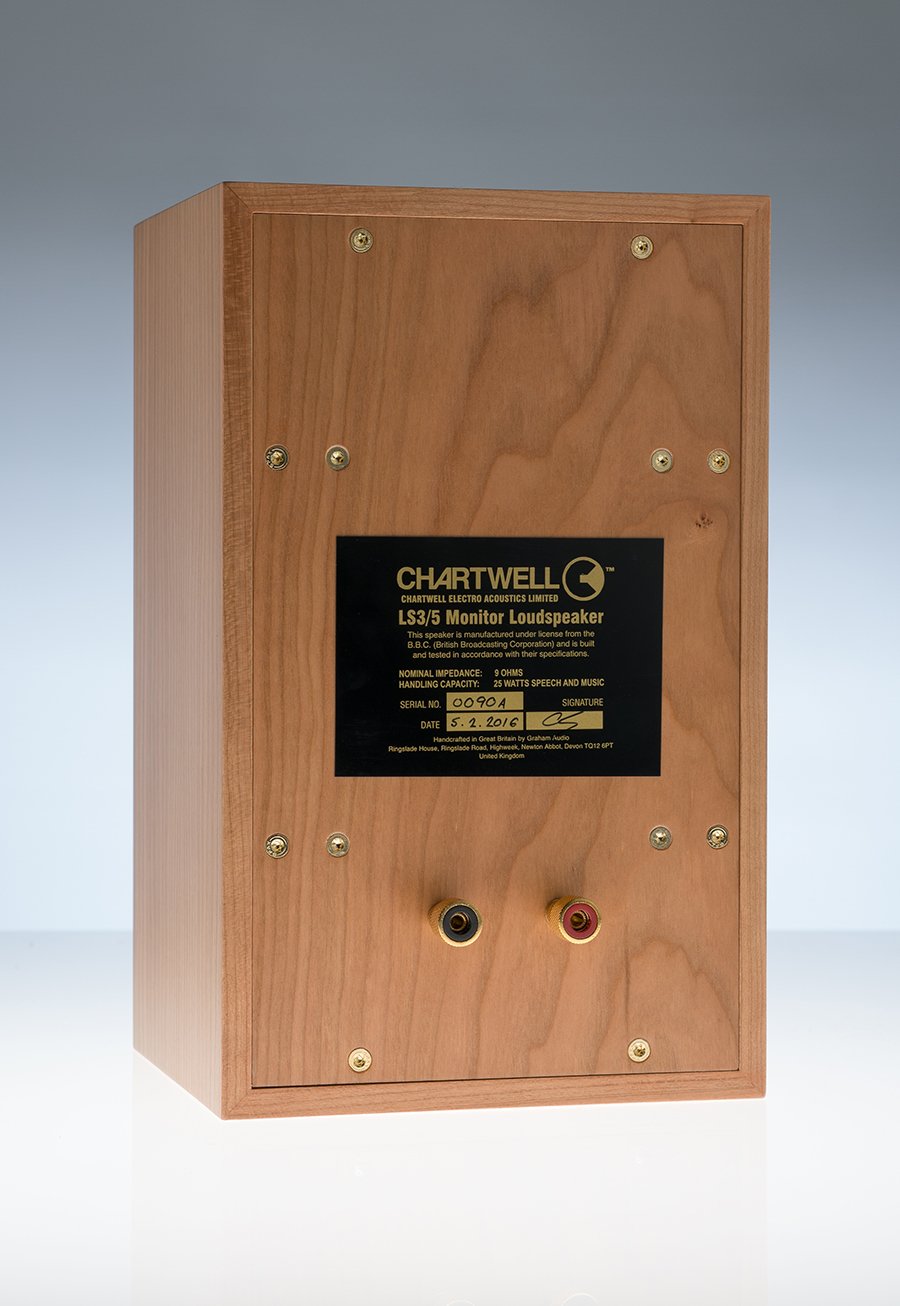
Depth of soundstage was particularly enjoyable front and back as well as left and right. Having stood in the live area at Air Studios for their new album (out soon) I could tell there was a lack at the very highest frequencies, but if you want bite, tension, and a speaker that will tire you out, this isn’t it. BBC speakers were designed to be accurate, but also so that you could listen to them for many hours without going off-sick the next day with a headache. I didn’t want to stop listening. As a child hearing my father playing Glenn Miller I was carted off back 40 years, and didn’t want to end my dream. The fun in “In the Mood” just made me smile. Each soloist, especially the saxophones that made Glen Miller sound so unique and the piano, too, was detailed and very authentic, and I never once felt that the lack of bass below 60Hz a problem. Indeed the pounding bass at 2’35” of “The Hunt of Baba-Yaga”, Pictures at an Exhibition, Mussorsky, would put to shame many speakers at double the size. Turning to jazz, “Walking on the Moon”, The Yuri Honing Trio, had power and detail that allowed each instrument to breathe amid the furore. Only in Wynton Marsalis epic New Orleans Bump did I feel the need to partner up the bigger brother, LS5/9, though this was still a good performance.
Turning to Pink Floyd Endless River “Anisina” the clarity from cymbals and guitars, strings, vocals, digital sax and synths, et al, were refreshingly clear in the mix with the drum skins adding enough grunt and power to make this a diminutive monitor of epic proportions. Even the thunder at the end had enough grunt to be believable. I was back at the BBC, back in the van, the cupboard and the small studio. Even heavy rock and synth managed with a relatively stiff (British) upper lip. If I had to criticise it at all it would actually be in the top end rather than the bass, finding it not giving as much detail as some modern day here-today-gone-tomorrow monitors. I might possibly have heard an original LS3/5 in my early days at the BBC, though my experience is with the LS3/5a, and this speaker brought back those memories. What Graham Audio has done is recreate the original master but at a much smaller cost than the BBC spent in making the replacement. No one really knows where all those original 3/5’s ended up. I can only assume the BBC threw them out or they ‘disappeared’.
Back at Aunty, it was important that soundstage and sound level didn’t ‘jump’ in music edits or mixes, and the BBC speaker was ideal for this, showing every nook and cranny but in a warm and musical way. Top frequencies were not quite so “shouty” as my ancient thoroughbred, but much of that is due to age related changes in the drivers and crossover, and also perhaps just that the ‘a’ didn’t get as good as the original. The thing about the LS3/5a was its modesty and musicality, despite that infamous “hump” at around 1kHz- 1.5kHz, which made listening to speech so good. In terms of overall musicality and balance of sound the Graham Audio goes even better, and all the better when considering the price of £1,650.
CONCLUSION
Graham Audio didn’t need to make an LS3/5a. They wanted to create the sound that began it all, and succeed they certainly have. What Graham Audio have done is join two of Hifi’s iconic names in one great product, recreating the LS3/5 and bringing back that star name Chartwell. If you want warmth, musicality and detail of soundstage, and don’t mind missing out on lowest bass, then I really do suggest you take a listen. And what is so important to stress here is that you also get both detail of sound and long-listenability, which are rarely combined in a single speaker, especially one so small.
Build Quality: Good looks and wood quality, well built.
Sound Quality: At least as good as the second generation LS3/5a. Compared with my Chartwells these have an extended bass which is hard to imagine for the size of the speaker, just as those in the 1970’s would have been amazed.
Value For Money: With a price of £1,650 this is a very small price to pay for a big sound and a part of hifi history.
Pros:
Immense musicality
Exceptional bass for the size
Detail that doesn’t tire you out
Detailed soundstage
Cons:
This is trying to match the original 3/5, so if you expect 30-38,000Hz you should be looking elsewhere
Input limited to 50Watts
Price:
£1650 for cherry and £1800 for Rosewood
Janine Elliot
Specifications
| Finish | Real wood veneer |
| Dimensions (w/h/d) | 19cm by 30cm by 17cm |
| Weight | 5.3kg |
| Frequency response | 70Hz to 20kHz, ±3dB |
| Nominal impedance | 9Ω |
| Sensitivity | 83dB SPL (2.83V, 1m) |
| Maximum output | 95dB for a pair at 2m |
| Bass/midrange | 110mm Bextrene |
| Tweeter | 19mm Dome tweeter |
| Recommended amplifier power | 25 to 50 watts unclipped programme |


























































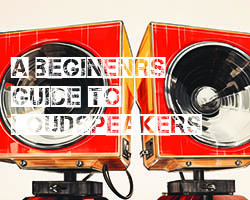






















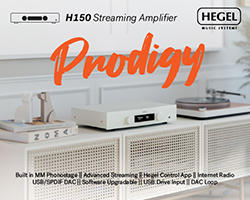




























































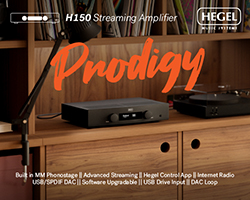














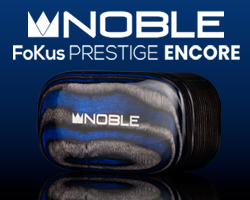


























































You must be logged in to leave a reply.